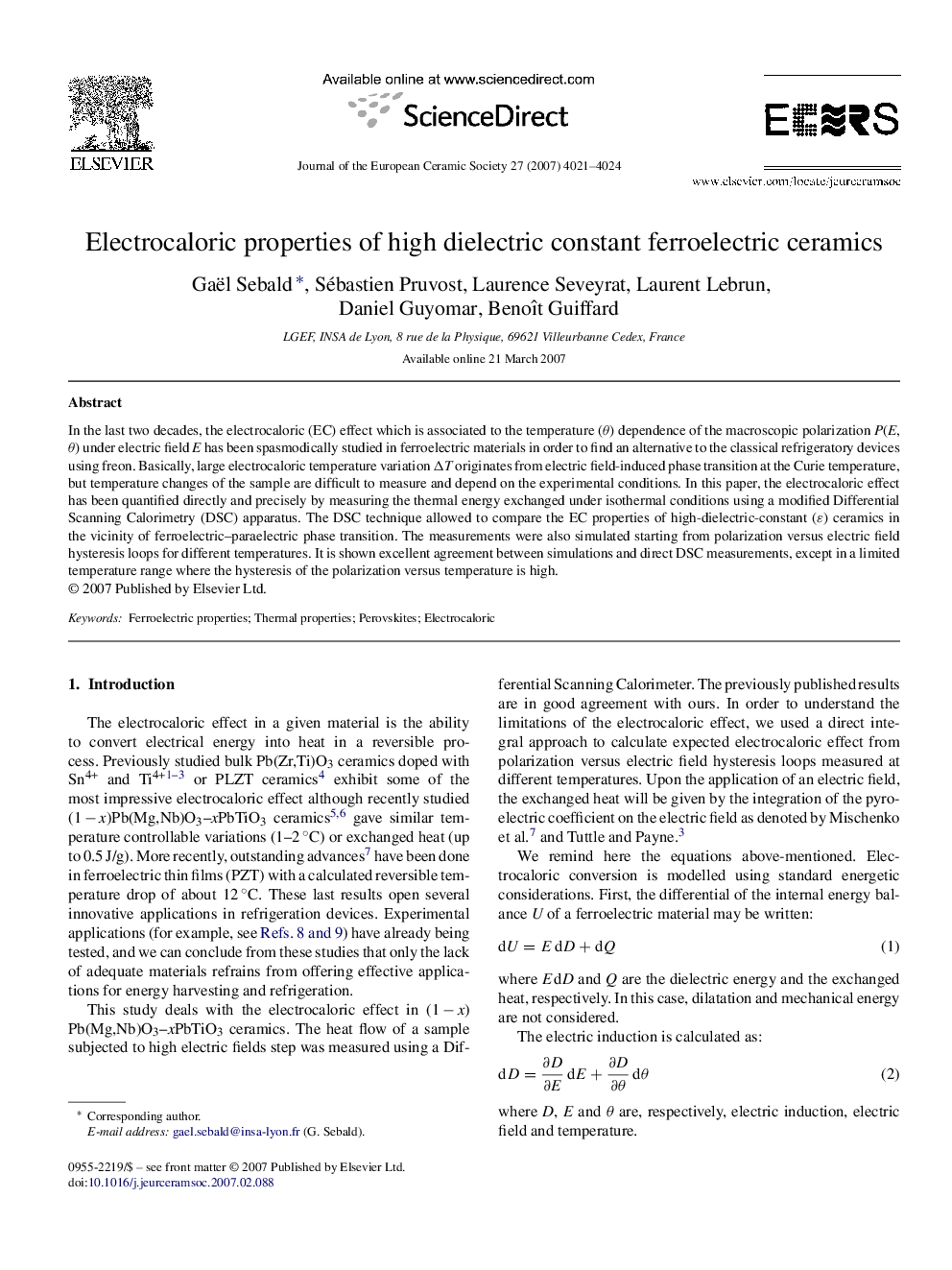| Article ID | Journal | Published Year | Pages | File Type |
|---|---|---|---|---|
| 1476477 | Journal of the European Ceramic Society | 2007 | 4 Pages |
In the last two decades, the electrocaloric (EC) effect which is associated to the temperature (θ) dependence of the macroscopic polarization P(E, θ) under electric field E has been spasmodically studied in ferroelectric materials in order to find an alternative to the classical refrigeratory devices using freon. Basically, large electrocaloric temperature variation ΔT originates from electric field-induced phase transition at the Curie temperature, but temperature changes of the sample are difficult to measure and depend on the experimental conditions. In this paper, the electrocaloric effect has been quantified directly and precisely by measuring the thermal energy exchanged under isothermal conditions using a modified Differential Scanning Calorimetry (DSC) apparatus. The DSC technique allowed to compare the EC properties of high-dielectric-constant (ɛ) ceramics in the vicinity of ferroelectric–paraelectric phase transition. The measurements were also simulated starting from polarization versus electric field hysteresis loops for different temperatures. It is shown excellent agreement between simulations and direct DSC measurements, except in a limited temperature range where the hysteresis of the polarization versus temperature is high.
